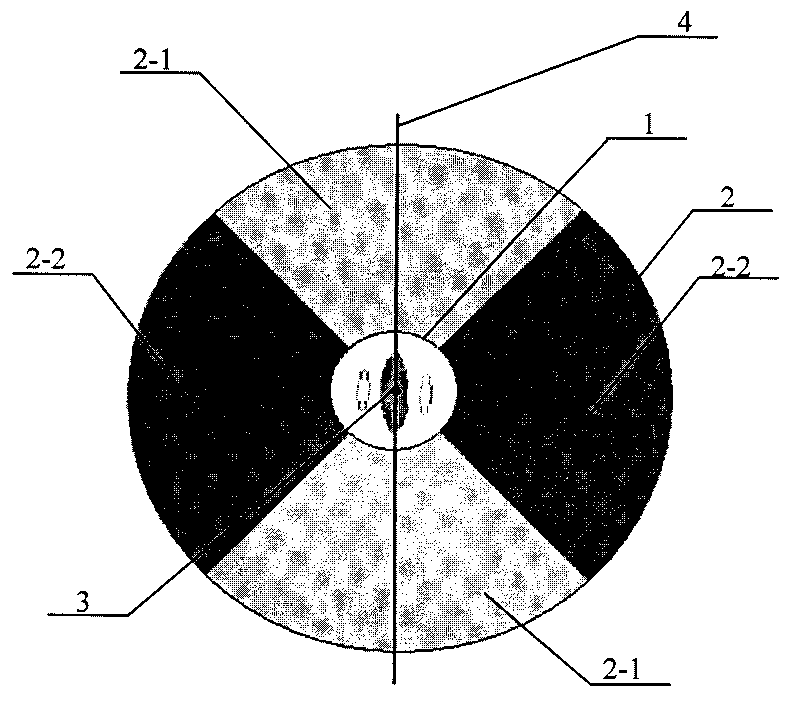Method for detecting contour of image target object by simulated vision mechanism
A target object and contour detection technology, applied in the field of bioinformatics, can solve the problems of no automatic adjustment function, accurate extraction of target contours, poor contour detection and target contour effects, etc.
- Summary
- Abstract
- Description
- Claims
- Application Information
AI Technical Summary
Problems solved by technology
Method used
Image
Examples
Embodiment 1
[0017] Embodiment 1: Take the contour detection of artificial images as an example:
[0018] This embodiment first constructs an image containing a "Z"-shaped continuous line (i.e. a contour line) embedded in a background of random line segments with random orientations (such as figure 2 a) As an input image, the image size is 512×512 (pixels); the diameter of the small-scale (high-frequency) Gabor filter used is 15 pixels, and the diameter of the large-scale Gabor filter is 60 pixels; non-classical receptive field filtering The outer diameter of the filter is 48 pixels.
[0019] The specific detection method is as follows:
[0020] A. Gabor filter processing: given the small-scale (high-frequency) parameter σ of the Gabor filter f =1.5, take 12 orientations in the range of 180°, and their orientation parameters are respectively iπ / 12, (i=0, 1, ..., 11), and a small scale (high frequency) parameter is obtained as σ f =1.5 and 12 Gabor filters in different orientations; the...
Embodiment 2
[0027] Embodiment 2: Take the contour detection of actual natural images as an example:
[0028] The image of this embodiment is the Hyena (hyena) image and its corresponding standard contour image downloaded from the currently internationally recognized image database website for verifying the effect of the contour extraction method, and the image size is 512 × 512; the small scale (high frequency) used The diameter of the Gabor filter is 19 pixels, the diameter of the large-scale Gabor filter is 95 pixels; the outer diameter of the non-classical receptive field filter is 64 pixels.
[0029] The specific implementation process of this embodiment is as follows:
[0030] A. Gabor filter processing: given the small-scale (high-frequency) parameter σ of the Gabor filter f =2.0, take 12 orientations in the range of 180°, and their orientation parameters are respectively iπ / 12, (i=0, 1, ..., 11), and a small scale (high frequency) parameter is obtained as σ f =2.0 and 12 Gabor fi...
PUM
 Login to View More
Login to View More Abstract
Description
Claims
Application Information
 Login to View More
Login to View More - R&D
- Intellectual Property
- Life Sciences
- Materials
- Tech Scout
- Unparalleled Data Quality
- Higher Quality Content
- 60% Fewer Hallucinations
Browse by: Latest US Patents, China's latest patents, Technical Efficacy Thesaurus, Application Domain, Technology Topic, Popular Technical Reports.
© 2025 PatSnap. All rights reserved.Legal|Privacy policy|Modern Slavery Act Transparency Statement|Sitemap|About US| Contact US: help@patsnap.com



